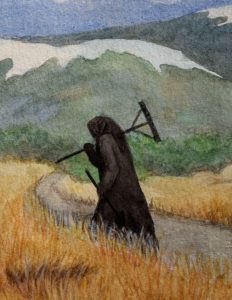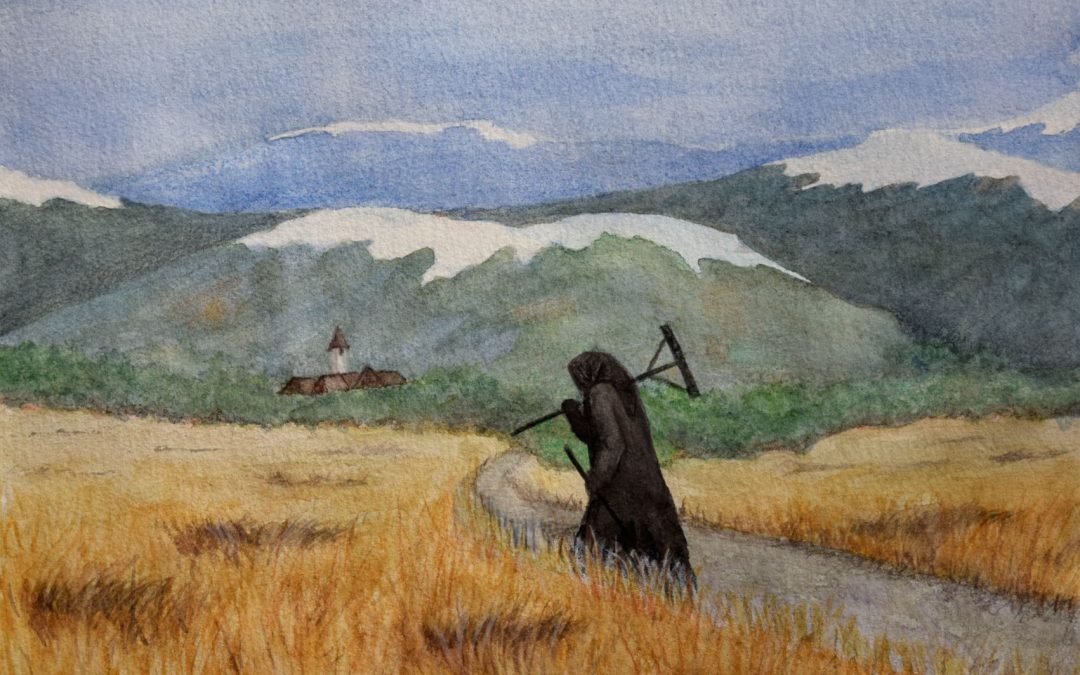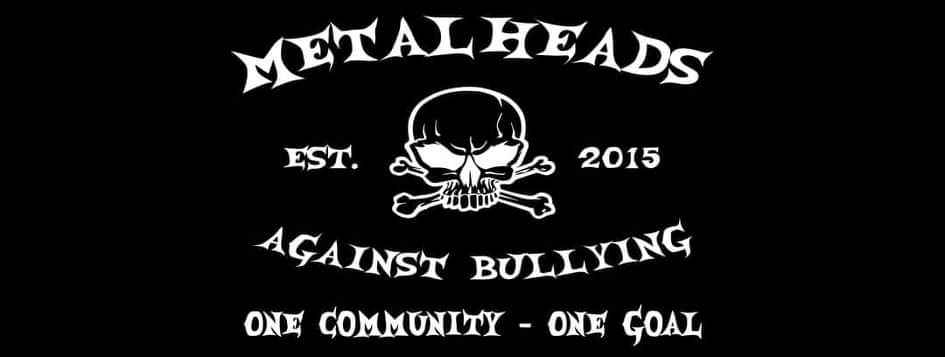To get back at the pandemic, I’ve chosen to start my Creatures of Folklore series of paintings with Pesta.
The painting shows her walking to a village in the mountains. But we all hope to see her leaving really soon. I, for one, have had quite enough of her. I made it using watercolour, watercolour pencils and a tiny bit of gesso on watercolour paper. The size of it doesn’t show in the images but it’s 25 x 35 cm or 9.8 x 13.8 inches. So neither large nor tiny.
The idea came out of pure spite and annoyance at the current pandemic and the way some people choose to do stupid things. Making it last longer than necessary and spreading it to vulnerable people.
Different Plague Entities
In Norway, ‘Pesta’ was the personification of the Bubonic Plague or Black Death, which hit Norway with irregular intervals from 1349 to 1654. In old tales, the name is specifically used for a female disease demon.
She’s often described as small, old and sallow, a grey-faced hag with black eyes, black loose-hanging hair and a red or blue dress.
It was said that she walked from house to house, bringing the disease wherever she went.
She carried a rake and a broom, using them to decide how many of the people in the house should die. Where Pesta swept with the broom, all in that house would die, and where she used the rake, some would survive, slipping through the teeth of the rake.
She sometimes also has a book with the names of the people who’ll die from the plague. Some also believed her to travel on a rat-filled ghost ship. Something that fit the belief in rats as plague carriers. Science has since disputed that the rats caused it.
The stories do vary a bit, also in Norway. In Setesdal, she was a little girl and among the northern Sami, Rotto/Rothu (disease and death demon) was a child or man, sometimes on a horse. In Tuddal, the Sott (any serious or deadly disease) was a man with a staff and a book under his arm or a woman with a broom. In Vefsn, the Sott came as man and wife.
In Sweden, there are a couple of different descriptions of the plague personified.
Some describe it as a man or boy in grey clothes who, in some stories, touched those about to die with staff or spear.
Others described a beautiful, young woman who spread beautiful items around her and enticed young men to dance. Anyone who touched the items or danced with her would die.
Yet another Swedish story describes an old woman in dirt brown clothing walking the roads.
Likhoradka or Tryasavitsa is a female spirit in Slavic mythology who was able to possess your body and cause disease. She was sometimes portrayed as a tall woman with dishevelled hair, a pale face and dressed in a white dress. She brought disease to anyone she tried to touch or to kiss.
In Serbian tradition, Čuma or Kuga was (usually) an old woman with long, white hair dressed in white. They hated filth and were especially eager to infect a dirty house. Cleaning your house to prevent infection was a good idea even if you didn’t believe in these creatures.
In Greek and Cypriot tradition, the plague can be personified as an old or blind woman who is often dressed in black. She might show up with another woman, as plague and cholera or as plague and Faousa (boils/bubonic plague, skin ulcers), or with two other women as plague, cholera and smallpox.
In other Cypriot traditions, the plague appears as a wild and roaring woman with loose hair, a dirty face and wild eyes or as a dwarf.
My choices for this painting
I’ve chosen to unify some of the legends of her appearance but mainly focus on the Norwegian character made known through the drawings of Theodor Kittelsen. He made her the main character in his collection of drawings, poems and legends about the Black Plague called ‘Svartedauen’. Which he published in the year 1900.

As with many other creatures from folklore and mythology, I will make a video for Pesta as well. I’ll include any other Plague personifications I learn of from now on in that video. If you know of any, let me know so I can learn more about them.
These videos are published on my YouTube channel and on The Witch’s Library blog.
The original has been sold but you can still get prints. And yes, it is available as a face mask 😀

The painting was finished Tuesday night and sold Wednesday. 2 hours after posting the shop link and 20 hours after it was first posted anywhere on social media.
I think this is the first time I’ve had a painting sell on the same day. Wouldn’t mind more of that 😀
The buyer said she’d never had a piece of art call out to her in that way. That’s a lovely piece of feedback to get :)







0 Comments